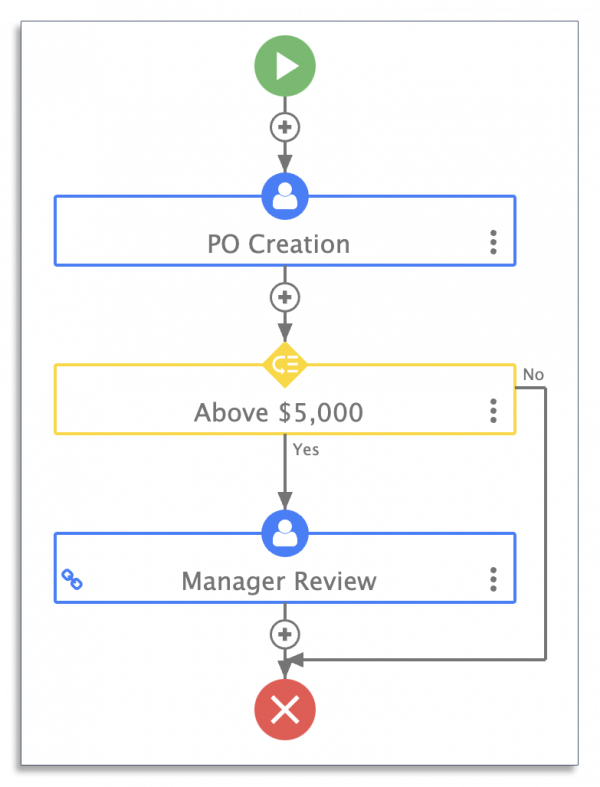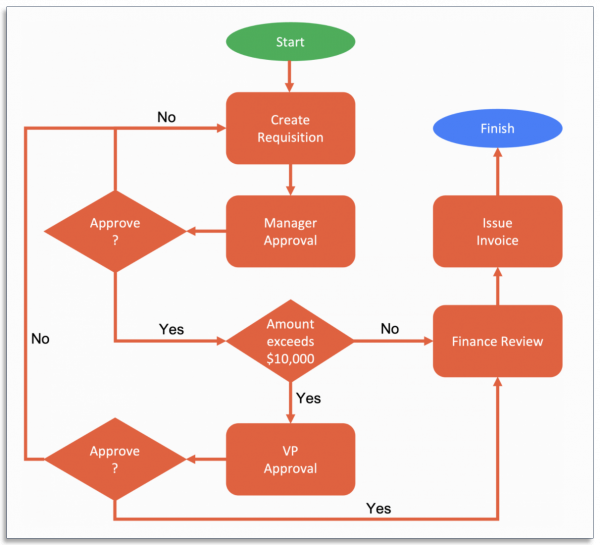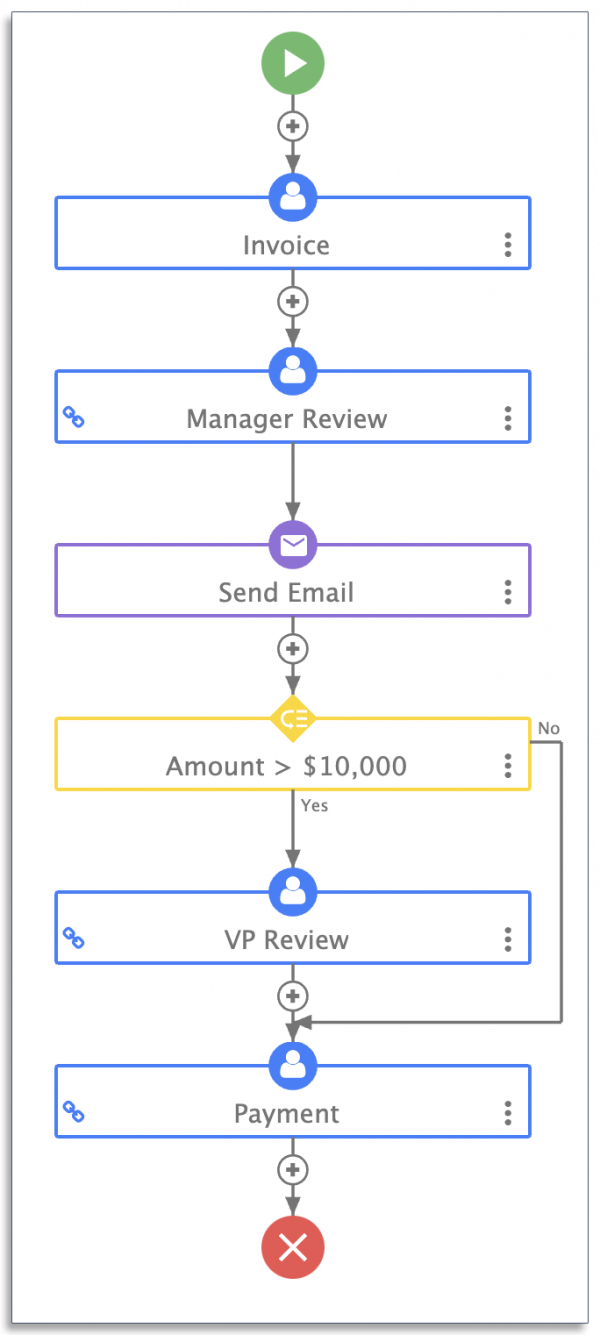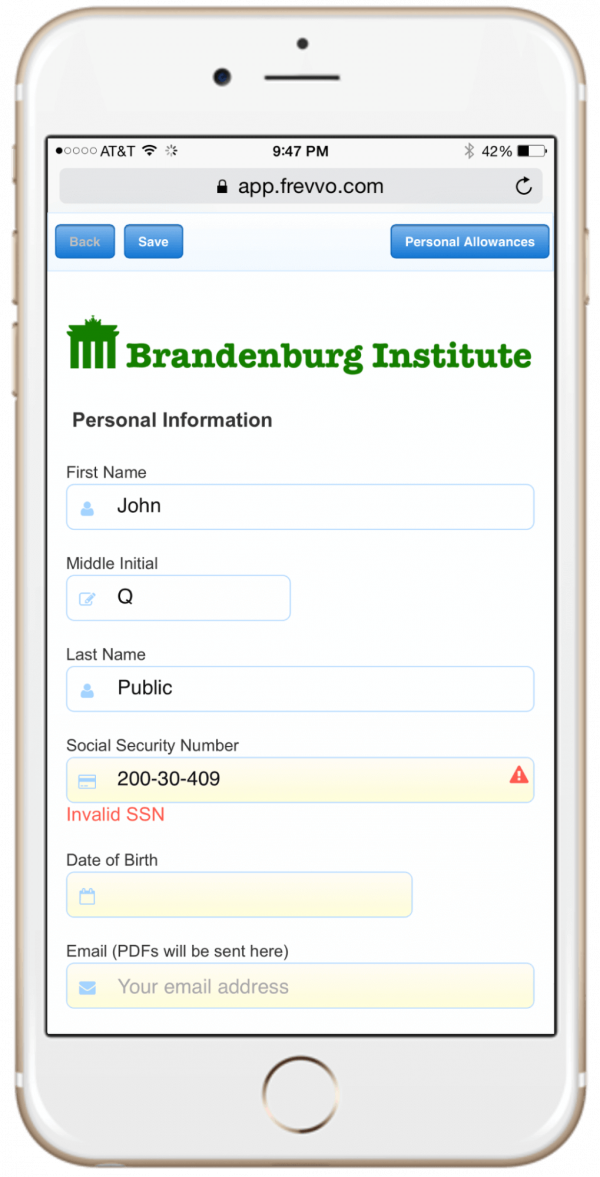Assign a task to two people without any guidelines and you can expect completely different results. This can work for projects that have some degree of creative leeway.
But having employees perform tasks their own way on more critical activities can affect project outcomes and lead to inconsistent customer experiences.
So how can you set expectations and ensure consistent results across your organization?
Implementing business rules is a good place to start.
This article will look at what business rules are and how implementing them can change how you work. We’ll also look at how you can incorporate business rules into your workflows to make them more efficient.
Click the links below to jump ahead:
- What Are Business Rules?
- What Are the Benefits of Business Rules?
- How to Implement Business Rules Into an Automated Workflow
- 7 Examples of Business Rules
What Are Business Rules?
Business rules are a set of instructions that determine how specific processes are performed. They provide guidelines on critical activities and help ensure compliance with company policies.
Employees having a lack of clarity or understanding of their roles is more common than you may think. Nearly 50% of employees across all sectors lack role clarity in the workplace.
Using business rules across your organization can help employees understand their roles and what they need to do to carry out certain tasks.
You can write these rules down in a handbook for employees or automate them using workflow automation software. The software often includes a business rules engine that guides decision-making based on preset rules.
Let’s say you want to automatically approve purchase requests that are below $5,000 but require approval from a manager above that amount.
With a workflow engine, you can create a business rule based on the example above and implement it in your approval process for purchase orders to automate this decision-making.
Here’s an example of a purchase order with a business rule:

Workflow routing is just one example of how you can apply business rules.
Other examples include using rules for data entry. For example, you can make certain fields on a form required depending on which department is filling them out.
Later in this article, we’ll take a closer look at how you can use workflow software to implement business rules. For now, let’s look at why you should use them in your organization.
What Are the Benefits of Business Rules?
It’s not uncommon for a business to make decisions on the fly in its early years. But taking this approach isn’t practical in the long term.
Organizations that want to scale their operations without sacrificing efficiency must implement automation technology like business rules.
Here’s why.
Increases Efficiency
Unwritten rules create a lack of clarity, which affects efficiency.
Imagine you assign similar tasks to a group of new hires. Without clear guidelines and rules, your new hires will likely complete the task to a different standard. Some may even waste time figuring out how to perform a certain step.

Business rules make your workflows more efficient, especially when you use business process automation software to automate them.
Take document routing as an example.
Chasing down signatures to get a document approved is time-consuming. By applying business rules to document routing, you can make approvals more efficient.
Improves Consistency
Many organizations have rules that are informal or undocumented.
For example, a manager may offer discounts to customers who spend a certain amount. It’s a common strategy that retailers use to boost sales and increase loyalty.
However, if this rule isn’t documented, employees are likely to apply the discount differently — some customers may receive a discount, while others may not. This can lead to inconsistent customer experiences and even hurt your brand.
Applying business rules to a process can improve consistency. They ensure that employees uniformly carry out certain tasks once specific criteria are met.
Ensures Compliance
Ensuring compliance with company policies is difficult without well-defined rules.
Consider the expense approval process, which allows employees to claim back any costs they’ve personally incurred on behalf of their employer.
However, one challenge that finance teams face is maintaining compliance. Only 27% of companies have a system that automatically flags out-of-policy expenses.

Employees may include out-of-policy items (or forget to attach receipts) when submitting expense claims, which can lead to financial losses if the errors are not caught.
Ensuring compliance can prove challenging, and mistakes are bound to occur if there are volumes of expense claims to process.
Finance departments try to improve compliance by including a list of items that are covered and placeholders with detailed instructions for submitting expense claims. But, this is a manual and error-prone approach.
A business rules engine can enforce compliance so that ineligible expense items are automatically rejected and claims cannot be submitted without the proper receipts.
Streamlines Decision Making
Companies make hundreds of decisions on a daily basis. Implementing business rules can help streamline these decisions.
For example, let’s say your company assigns customer support tickets to certain representatives based on specific criteria. While an employee can make these decisions, you can use business rules to automatically assign those tickets.
74% of business leaders and employees believe that parts of their jobs can be automated.

By leveraging business rules to automate decisions like routing, you can speed up certain processes and free up employees for higher-value work.
With the benefits of business rules described above, it’s no surprise that 93% of business decision-makers plan to incorporate automation across more areas of their organization.
Let’s look at how you can get started with business rules in the next section.
How to Implement Business Rules Into an Automated Workflow
The easiest way to implement business rules is to write them down in a handbook. But their application relies on every individual reading them and following through.
Inevitably, different individuals will interpret the instructions differently. It’s almost impossible to obtain consistency and uniformity with this type of manual approach.
Using workflow automation software like frevvo can help your company enforce business rules in a consistent manner thereby streamlining operations. Here’s how to get started.
1. Pick a Workflow
Business rules are more effective when you apply them to workflows that employees perform on a regular basis.
Start with a workflow that follows a repeatable set of steps (with clear start and endpoints). It should also accomplish a specific objective for your company and be performed reasonably often.
Here are some example workflows you can apply business rules to:
- Employee onboarding
- Purchase orders
- Contract approvals
- Invoice approvals
- Expense claims
- Travel requests
- Time-off requests
- Timesheet approvals
Your company may have dozens or even hundreds of workflows.
To avoid becoming overwhelmed, simply choose one to start with. You can also narrow down your list by choosing a workflow that generates a high return on investment (ROI) when completed.
2. Create a Workflow Diagram
Once you’ve picked a workflow, the next step is to understand how it works today.
What is the exact sequence of steps? Who’s involved in each step, and what decisions do they need to make? Do employees need any tools or resources?
Walk through the exact workflow yourself and get input from those who are directly involved.
Use the information you’ve gathered to create a workflow diagram — a graphical model that lets you visualize each step of a workflow from start to finish.
Here’s an example of a workflow diagram for invoice approvals:

Creating a workflow diagram is useful because it helps you identify where you can add business rules to your workflows.
3. Add Your Business Rules
The next step is to add your business rules.
Let’s say you want to make invoice approvals more efficient. Senior executives are currently reviewing each invoice, but this policy is slowing approvals down.
To speed things up, one business rule you can create is to route invoices to a senior executive only if their value is $10,000 or more.
frevvo’s Visual Rule Builder walks you through the following steps when adding a rule to your workflows:

There’s no coding required, so even non-technical users can create their own business rules.
Here’s what our new invoice approval workflow looks like with a business rule:

Invoices below $10,000 are automatically routed to the finance department for payment.
This is just one example of a business rule you can add to a workflow. Here are others that you can create with the Visual Rules Builder:
- Validate that the data in a field fits the requirement (e.g., valid email addresses)
- Make additional fields required depending on which department is filling them out
- Populate fields with data based on certain selections
- Show/hide form controls like buttons and text areas
- Automatically and consistently apply discounts (e.g., depending on region)
- Ensure all required information is provided before allowing the workflow to advance to the next step
Adding these and other rules to your workflows can help your company improve efficiency, minimize errors, and speed up approvals.
4. Test Your Workflow
Leaving out a key step in a workflow can delay work and cause confusion. That’s why it’s important to run a few tests before you deploy a new workflow.
In frevvo, you can test your workflow right from the workflow designer. You can even preview how the dynamic forms you create will look on mobile devices.
Here’s an example of a mobile preview for invoice approval forms:

Run through the test to make sure everything is working properly. It’s also a good idea to get feedback from your team, as they’ll likely have valuable insights to share. When users have a chance to impact the system, they’re also far more likely to enthusiastically adopt it.
5. Deploy Your Workflow and Monitor Key Metrics
Deploy your workflow and provide guidance so that your team knows how to use it.
Be sure to also track key performance indicators (KPIs) like cycle times — the time it takes to complete a workflow from start to finish. The analytics data you gather will prove especially helpful to continue improving your business processes.
7 Examples of Business Rules
Now that you understand what business rules are and how to create them, let’s look at how you can apply them across your organization. Here are some examples.
Read more: 10 Examples of Business Rules That Make Work More Efficient
1. Routing Documents
Forms like contracts and invoices typically go through an approval process. However, having a senior executive review each one may not be the best use of their time.
You can create a rule like, “Route a VP for additional approval if the invoice amount is above $10,000” to improve turnaround times.

2. Performing Calculations
Manual data entry is time-consuming and prone to errors. You can add a business rule to your forms to automatically calculate totals from other values.
Here’s an example:

This cuts down on manual data entry and reduces the risk of human error.
3. Applying Discounts
You can create business rules to apply discounts on accounts that spend a certain amount. An example could be something like, “Give 5% off if a customer spends more than $5,000.”

4. Requiring Signatures
Receiving an important form without a signature can be frustrating — you’d have to send the form back and review it again.
To avoid wasting time on constant back-and-forth trips, you can make signature fields required on forms like expense claims and display an error if a signature is missing.
Here’s an example:

5. Enforcing Data Validation
You can also create business rules to specify custom formats for fields. An example is ensuring that users enter social security numbers or bank account numbers in the correct format.

6. Approving or Rejecting Applications
Lenders often use specific criteria to approve or reject loan applications.
You can apply similar rules to processes like contract approvals. For example, you can create a rule that declines a contract if certain criteria aren’t met, saving employees the time it would take to unnecessarily review something that does not make business sense.
Contracts can also have extremely complex and dynamic approval chains depending on the information entered, the departments involved, and ad-hoc changes made along the way by approvers.
Business rules put guidelines around these approval chains making sure that necessary approvals aren’t skipped, while still affording the flexibility to change things on the fly.
7. Improving Compliance With Internal Policies
Business rules can help improve compliance.
For expense claims, you can make certain fields required (e.g., image attachments for receipts) and have employees check a box confirming they’ve read the company’s expense policy.
You can enforce constraints on per diem charges, mileage reimbursements, and business meals automatically without the need to manually verify.
Business rules can also allocate expenses automatically to GL categories or budget accounts depending on data entered in the form. This reduces the need to manually reconcile later.
You can also apply business rules to other internal policies, such as vacation and time-off requests with similar productivity-enhancing automation.
Conclusion
Business rules are powerful tools that can help your organization improve its processes. They use business logic to guide and automate everyday decisions.
The good news is you don’t need a team of developers. frevvo’s workflow automation software comes with a powerful business rules engine. It has a fully visual user interface, so there’s no coding required.


